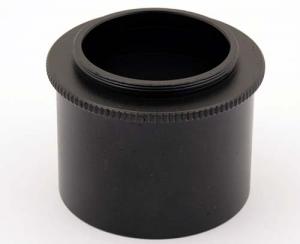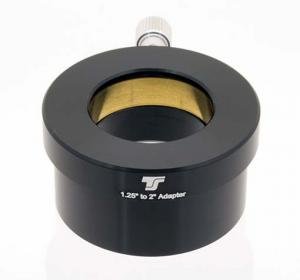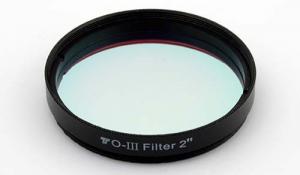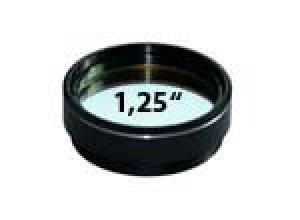- Telescopes
- Overview:
Telescopes - Achromatic Refractor
- Apochromatic Refractor
- Overview:
Apochromatic Refractor - ED Refractor - less color aberration than an achromatic
- SD APO - color free 2-element APO objective
- EDT APO - 3 element ED objective
- High End APO with 3-element APO objective - no color aberation
- Flatfield APO with flat field for Astrophotography
- All Apos and EDs from all manufacturers - large overview
- TS APO and ED from Japan with high quality optics
- Overview:
- Newtonian Telescopes
- Dobsonian Telescopes
- RC Ritchey Chretien Telescopes
- Casssegrain Telescopes
- Reflektor Telescopce with Lens Correcture
- Maksutov Cassegrain Telescopes
- GoTo Telescopes
- Solar Telescopes H-Alpha
- Overview:
- Mounts Tripods Rings Rails Power Supply ...
- Overview:
Mounts Tripods Rings Rails Power Supply ... - Mounts Equatorial with GoTo
- Mounts Equatorial without GoTo
- Mounts Azimutal with GoTo
- Mounts Azimutal without GoTo
- Mounts GoTo - Harmonic Drive
- Travel mounts for astro imaging
- Tripods Piers Polar Wedges
- Mount Control & Electronics
- Dovetail Clamps, Plates and Mount Adapters
- Tube Rings
- Power Supply
- Counterweights Balance Weights
- Mount Accessories - Other
- Overview:
- Telescope Accessories
- Overview:
Telescope Accessories - Eyepieces
- Barlows & Reducer Lenses
- Diagonal Mirrors and Prisms
- Binocular Viewers
- Finder Scopes
- Telescope Collimation and Test
- Cleaning Tools
- Transport and Storage
- Dust protection for Telescopes & Accessories
- Stray Light Protection
- Dewcaps and Heater
- Focusers, Adapters, Motorfocus
- Telescope DIY & Improvement
- Other telescope accessories
- Replacement Parts
- Overview:
- Filters
- Overview:
Filters - Color Filters and Color Filtersets
- Nebular Filters for Visual Observing
- Neutral-Density and Polfilter
- Photo Narrowband Nebular Filters
- Photo Broadband Filters
- Photo Planetary Filters
- Photo R-G-B and IR Cut Filters
- Photo - Filtersets
- Photometric Filters
- Clip Filter for DSLR Cameras
- Filter Wheels and Filterslider
- Solar Filters for white light
- Solarfilter for H-Alpha and Calcium
- Overview:
- Adaptors
- Overview:
Adaptors - Adapter 1,25" and 24,5mm
- Adapter 2"
- Adapter T2 - M42x0.75
- Adapter M48x0,75
- Adapter M54
- Adapter SC
- Adapter M63
- Adapter M68
- Adapter to other Threads
- Adapter Extensions
- Adapter camera bayonet
- Adapter Objective Filterthread
- Adapter Quick Changing , Rotation
- Adapter Eyepiece Projection
- Adapters Tilting
- Overview:
- Astrophotography and Photography
- Overview:
Astrophotography and Photography - Cooled Cameras
- Cameras without Cooling
- Deep-Sky Cameras uncooled
- Set-Offers Camera, Filter, Wheels
- Acessories for Cameras
- Travel mounts for astro imaging
- Imaging Correctors for Telescopes
- Autoguiding Cameras & Sets
- Everything for Guiding
- Focusing aids - Bahtinov mascs
- Flat Field foils and boxes
- Lenses for Cameras
- Piggyback Camera Holder
- Camera Bags, Photocases & more
- Digital Camera and Smartphone Adapter
- Other photo accessories
- Overview:
- Binoculars, Spotting Scopes, Microscopes, Range Finders
- Overview:
Binoculars, Spotting Scopes, Microscopes, Range Finders - Spotting Scopes and Acessories
- Roof Prism Binoculars
- Binoculars with Porro prisms
- Binoculars from 100mm Aperture
- Binoculars with 1,25 inch eyepieces
- TSMX APO Binoculars
- Binoculars for Astronomy
- Binoculars Hiking Bird watching
- Monoculars - Opera Binoculars
- Accessories for Binoculars
- Range Finders
- Microscopy
- Bags for Phototripods & Binoculars
- Overview:
- Phototripods and Binomounts
- Books, Software
- Overview:
Books, Software - Books for Astronomy Beginners
- Star Charts and Planispheres
- Books about our Solar System
- Observing Tips for Amateurs
- Popular Astronomy Literature
- Teaching material
- Astrophotography books
- Telescopes, Observatories, Construction
- Calendars Yearbooks
- Software, Star Charts
- Books for Microscopers
- Books Nature and Animals
- Nature Photography TimeLapse
- Overview:
- Night Vision, Magnifiers, Weather, Domes & more
- Beginner Astronomy and Gift Ideas
- Second Hand & Special Offers
- New products
Manufacturer: -TS Zubehör
Product number: TSUHCL2
EUR89.00new
EUR 89,00
incl. 19 % VAT (DE)
The VAT indicated refers to that applicable in Germany. After logging in, the VAT amount is adjusted to the applicable VAT of the stored delivery country. Therefore, the final price may vary accordingly.
excl. 6.95 € shipping costs (DE)
more details to the shipping costs ...Please log in to calculate shipping costs to your country.
rating: 5.0 of 5TS-Optics 2" Premium UHC Nebula Filter against Stray Light - more Contrast2
- Details..
- Technical data..
- In the box..
- Manufacturer infos..
- Safety informations..
TS-Optics 2" Premium UHC Nebula Filter against stray light - more contrast in emission nebulae
This filter suppresses disturbing artificial light and thus improves the visibility of nebulae that emit light themselves - also in photography.The problem: An ocean of city lights causes a large amount of background illumination that drastically reduces the visibility of space objects. This is the case everywhere but in the most remote rural areas. As a result of this you can see much less of an objects and much fewer objects than would be possible with your telescope.
The solution: Fortunately, many celestial objects, namely emission nebulae, shine in other parts of the spectrum than our artificial lighting.
This is where the TS Optics UHC filter comes into play: It allows these important wavelengths to pass through, while the rest of the spectrum is almost completely reflected. This reduces stray light to a fraction of its normal brightness, while the light from celestial objects can pass almost unhindered. This increases the contrast during observation, moving hundreds of additional objects within reach of your telescope.
With which objects does the filter work - and how well?
In the area where the filter is transparent, planetary nebulae ([O III] lines) and many diffuse emission nebulae (H-beta line) radiate.Diffuse emission nebulae like the Orion Nebula are gigantic accumulations of hydrogen, in most cases also oxygen and partly sulfur, millions of times heavier than our sun! New stars are often formed here from the gases mentioned above, with hydrogen being the most important, even if the H-beta-line visible to the eye does not usually appear too strong. Fortunately, oxygen has been produced earlier in the history of the universe, whose light can now be seen. In the mentioned Orion Nebula both hydrogen and oxygen are important for its appearance.
Planetary nebulae like the Dumbbell Nebula are the remains of old stars that are at the end of their lives - hurled away star atmospheres, enriched with heavier elements like oxygen. By the way, the name comes from the round shape that many of these objects show in the telescope.
To simulate the effect of the filter, we chose the Dumbbell Nebula because it is easy to find and observe even in small amateur instruments:
 This is how the Dumbbell Nebula M27 looks like in a medium-sized telescope when observed from a small town
This is how the Dumbbell Nebula M27 looks like in a medium-sized telescope when observed from a small town And this is how it looks like when observed through a TS-Optics UHC filter under otherwise identical conditions. You can see much more structures here than without filter!
And this is how it looks like when observed through a TS-Optics UHC filter under otherwise identical conditions. You can see much more structures here than without filter!(Unfortunately it is not possible to show the visual effect on a real photo since cameras perceive celestial objects differently. For this reason we have simulated the effect by digital image processing. The image was made to resemble the true impression as closely as possible and to the best of our knowledge).
The filter works with the following telescopes:
The UHC filter can be used with any telescope which allows using 2" eyepieces. The filter will work well with any telescope from 70 mm aperture.Most telescopes with 2" eyepieces also include a reduction to 1.25" with integrated 2" filter thread. Under "recommended accessories" we also offer such a reduction. This allows you to use the 2" filter also with 1.25" eyepieces and then you do not even need to screw it from one eyepiece to the other when you change the magnification.
Can the filter also be used beneficially in astrophotography?
Yes, because the most important lines H-alpha and [S II], which cannot be observed visually at night because of their position in the red region of the spectrum, are also passed. However, a camera must be sensitive in this range and infrared radiation must be blocked if necessary.| Transmission ranges: | H-beta to [O III], H-alpha to [S II] and above |
| Suitable objects: | Diffuse emission nebulae, planetary nebulae, star formation regions |
| Substrate thickness: | 2 mm |
| Cell: | light metal with filter threads on both sides |
| Mount height: | 5.5 mm (w/o male thread) |
| Manufacturer / Importeur: | Teleskop-Service Ransburg GmbH |
| Street: | Von-Myra-Str. 8 |
| ZIP / City: | 85599 Parsdorf |
| Country: | Germany |
| Telefon number: | +49 89 99228750 |
| Email: | info@teleskop-service.de |
| Website: | www.teleskop-express.de |
Safety informations: PDF Download
Recommended accessories
Adaptors
TS-Optics Focal Adapter from 2 Inch to T2 (M42x0,75)
EUR 29,90RRP EUR 34,90you save 14.3% (EUR 5,00)
Cleaning & Collimating
Customers who bought this product also bought...
Similar Products
Reviews
Written by Elmar Köhler
on 2022-02-06
"sehr gut"
Written by Rüdiger Lange
on 2021-11-24
"Erfüllt seinen Zweck, gute Qualität"
Written by jan haverhals
on 2021-03-23
Nice
Written by Martin Doppelbauer
on 2020-04-10
Ich habe den Filter letzte Nacht fotografisch an zwei Objekten ausprobiert, und zwar am Christmas Tree Cluster und am Heart Nebula.
Dabei bin ich davon ausgegangen, dass dieser UHC-Filter ähnlich arbeitet wie die gleichnamigen aber teureren Filter von Astronomik. Das heißt: Ein Durchlassbereich im Bläulich/Grünen für H-Beta und O-III und ein weiterer Durchlassbereich im Roten für H-Alpha und S-II.
Aber das ist leider nicht der Fall.
Wenn man den Beschreibungstext genau durchliest kann man schon ahnen, wo das Problem ist: Dieser Filter hat keinerlei Durchlass im roten Bereich des Spektrums. Selbst mit einer astromodifizierten Kamera kommt da absolut gar nichts an.
Daher ist dieser Filter ausschließlich für die visuelle Beobachtung von Nebeln geeignet, nicht für die Astrofotografie. Das muss man beim Kauf berücksichtigen.
Written by Philippe LECA
on 2018-05-24
"Quality as expected. Very good quality / price ratio. I recommend."














